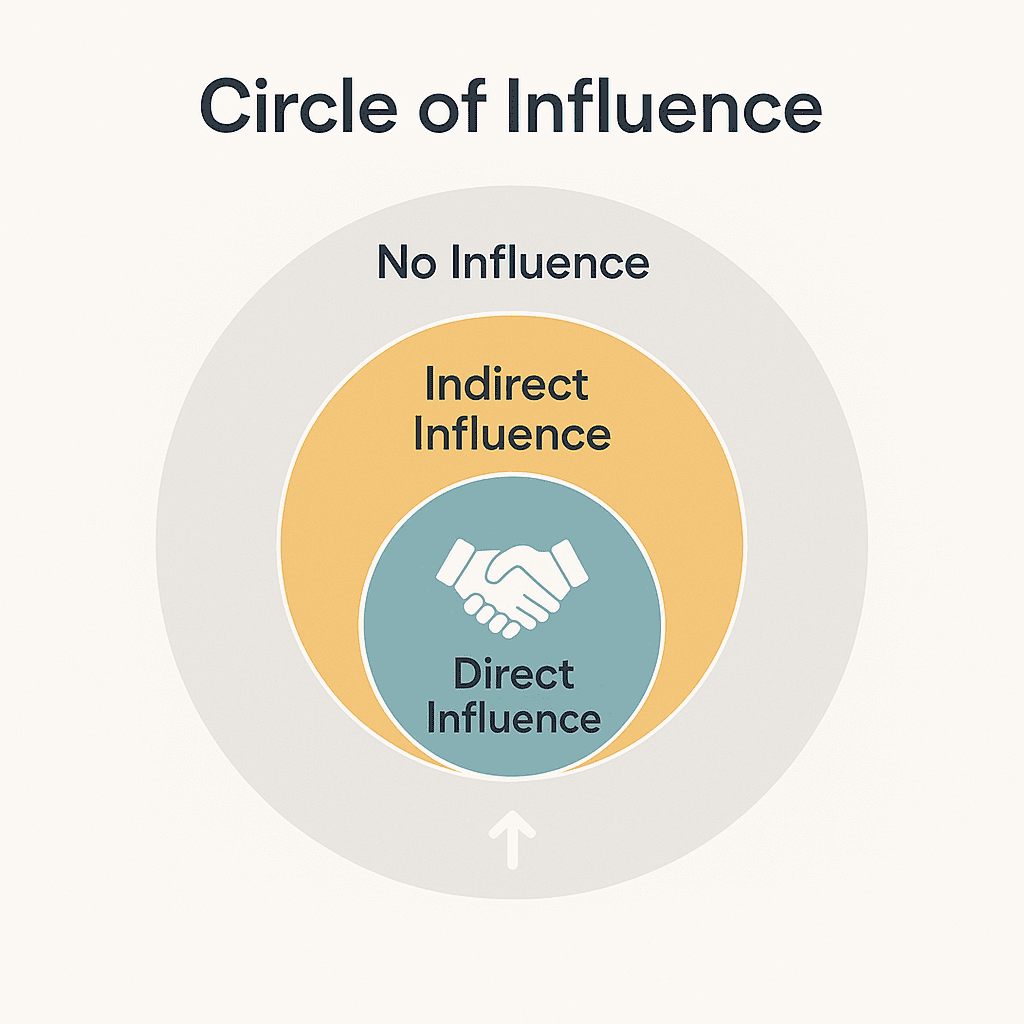A guide for you as a leader
The heart of service
The guest encounter – the moment a customer, guest or patient actually meets us – is the core of every service organisation. Yet many workplaces get stuck in endless debates about budgets, poor premises or market conditions – factors we can’t control. The result? Low energy, fragmented teams and mediocre guest experiences.
The Circle of Influence (inner, middle and outer rings) is a simple framework that helps you, as a leader or middle-manager, focus – and steer the team – towards what truly makes a difference in the guest encounter.
1. Inner circle – What we can influence directly in every shift
Everything here is fully under your team’s real-time control.
| Example | Leader’s role | Concrete question for the team |
|---|---|---|
| Greeting ritual (tone, eye contact, name) | Model the behaviour, give immediate feedback | “How do we want the first ten seconds to feel?” |
| Shift briefing (goals + energy) | Structure a 5-minute huddle, share yesterday’s lessons | “Which two focus goals are we measuring today?” |
| Handling peak periods | Be present on the floor, remove obstacles | “Who owns reallocating resources when we hit a peak?” |
Leader tip: End every shift with a micro-retrospective (max 3 min). Let the team themselves highlight one thing they could influence directly and how it went.
2. Middle circle – What we can influence indirectly over time
This is where your leadership really pays off. You don’t decide tomorrow’s result, but you shift the odds week by week.
| Example | Influence strategy | Key KPI |
|---|---|---|
| Competence & cross-training | Create a training plan, give 15 min “shadow time” per shift | % of staff mastering ≥ 3 stations |
| Service culture & values | Tell stories of good examples, celebrate micro-wins openly | NPS / likelihood to recommend |
| Staffing flexibility | Schedule by competence rather than hours alone | Lead-time to cover absences |
Leader tip: Translate every middle-ring goal into concrete behaviours (“ask proactively” rather than “increase customer confidence”) and follow up at the next team meeting.
3. Outer circle – What we cannot influence (let go quickly!)
| Type of factor | Acceptance ritual | Re-focus to… |
|---|---|---|
| Pandemic regulations, interest rates | Inform factually, ask only clarifying questions | “Given the circumstances, what can we adjust in the inner/middle circle?” |
| Guest expectations before arrival (social-media posts, rumours) | Monitor, avoid defensive stance | Reinforce the promises we can keep on-site |
| Corporate price decisions | Communicate openly why | Train on value-based arguments instead |
Leader tip: When the discussion drifts into the outer ring, park it visually: write the point on a whiteboard under “Out of our control” and return immediately to the inner/middle-ring action list.
Workshop: The Circle of Influence in 30 minutes
- Draw three circles on an A3 sheet and pin it in the staff room.
- Silent brainstorm (5 min): everyone writes post-its with current guest-encounter issues.
- Sort together (10 min): place the notes in the right circle.
- Prioritise two actions in the inner circle and one in the middle ring (10 min).
- Appoint owners & deadlines (5 min).
Repeat at every monthly review – you’ll see notes migrate inward as capability and courage grow.
Why this works
- Focus is contagious. When you consistently act in the inner/middle rings, the team follows.
- Psychological safety rises. Team members clearly see where their effort makes a difference.
- Results accelerate. Small, repeated improvements in the inner circle scale quickly when every shift applies them consistently.
Final challenge
Next time you hear someone say “Well, it’s the market that…”, pause and ask:
“Okay – but what’s in our inner circle right now?”
You’ll notice the conversation shifts, action happens and the guest encounter lifts – not despite constraints, but because you’ve stopped giving them your energy.
Good luck with your next shift!
// Oscar

